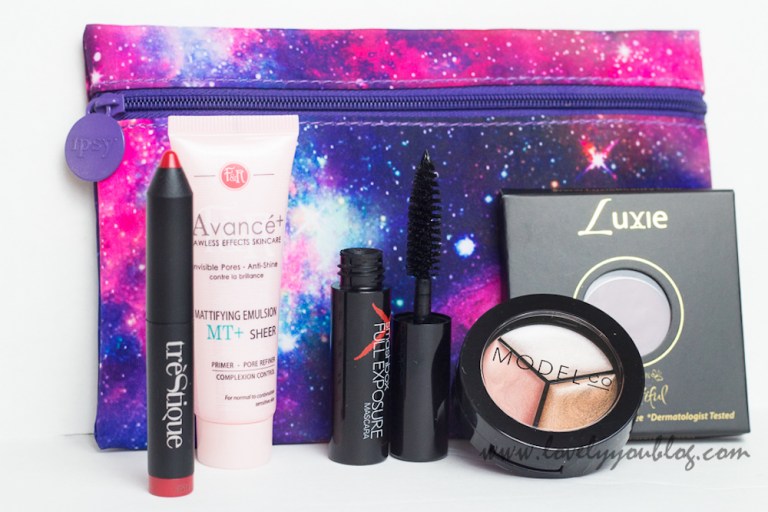
There is no shortage of services selling monthly beauty-in-a-box options for consumers. But, in a world with lots of options to have cosmetics, skin care products and all make and manner of personal grooming and enhancement options delivered to one’s door, Ipsy and its “Glam Bags” have managed to stand out, above and apart.
That is because its customers — all 3 million-plus active users, at last count — are more than a loosely connected group of makeup enthusiasts. They are a closely bonded community of cosmetics fanatics, and Ipsy isn’t just where they go to buy their makeup — it’s also where they go to learn how to use it.
Much of that can be attributed to the magic of co-founder Michelle Pham, a YouTube star with millions of followers for her tutorials on how to use the products that come out of those Glam Bags. The rare social media sensation who managed to parlay those eyeballs into spend from her watchers, Pham has since moved on from the firm she co-founded — at least, sort of.
In October, Pham announced that her company, Divinium Labs, would be acquiring EM cosmetics — an online brand heretofore owned by Ipsy. Pham will now be running EM Cosmetics.
“We wanted her to be successful and we wanted this for her,” noted Marcelo Camberos, co-founder and CEO at Ipsy, in a Wall Street Journal interview.
Though Pham is gone, there won’t exactly be a content vacuum in her absence. The company has expanded its video base into a vast network of video creators whose demos now make up most of what its audience watches, according to the company.
That in-house armada of creators had netted 137 million views across social media platforms as of this summer, amassed nearly 10,000 demonstration videos and created a network of 600 million followers.
While not all of those followers are subscribers, yet — in fact, just a small fraction are — the number of followers is growing. In 2015, Ipsy had 1.5 million subscribers, and that’s doubled as of today. Because those subscribers are regularly consuming the content streams that Ipsy is creating, they are also making it easier for the brand to “know” them and select the right combination of goods for their monthly Glam Bags.
Glam Gag construction is probably a more varied process than one might think. Ipsy currently offers more than 10,000 makeup combinations for Glam Bag offerings, each pairing tailored to subscribers’ needs based on interest surveys and what they watch on the site.
“We have hundreds of data points on members, allowing for personalization [that is] often talked about but rarely seen,” said Scott Stanford, a co-founder and managing director at Sherpa Capital.
Moreover, Ipsy is broadening how it is seeking those conversations as it realizes not every consumer is satisfied by items in their Glam Bags alone. As such, it is moving more toward direct eCommerce with its launch of Shopper, which makes it possible for Ipsy customer to order additional items and have them added to their monthly subscription box shipments.
“We’ve never envisioned ourselves as a subscription service — we envisioned ourselves as a disruptive beauty community,” Camberos said. “Our mission is to inspire individuals around the world to express their unique beauty. Everything we do is about self-expression. The Glam Bag and everything else has all been super personalized from the beginning. When I came up with the name for the company, the legal name, it was Personalized Beauty Discovery Inc. It was always meant to be about personalized beauty.”
And, key to personalization is consumers’ ability to shop a la carte and chose what they want when they want it, Camberos noted. For Ipsy to grow and continue to be profitable — it has been in the black for five years of its six-year existence — it needs to continually invest in knowing its customers, developing more ways to reach them and bring new ones into the fold.
“We have hundreds of specific data points, [and] people want to give us that data because they want us to give them better products,” Cambros explained. “We get over 5 million product reviews every month. We have a team of over 40 people who do that. If we do a good job, [customers] stay with us a lot longer and they’re likely to tell their friends how great Ipsy is.”
That data also means Ipsy has the ability to use its brand and the incredibly strong consumer relationships it has built to not just move subscriptions, but also find a way to take that community of 8,000-plus influencers and help make them a resource for brands either looking to tap a new audience or enter the market entirely.
Among Ipsy’s fundamental challenges — and on top of the regular ones that surround keeping its tech team intact and its offerings cutting-edge — is something unique and uniquely in need of constant renewal: its fan community and the content they produce.
In the post-Pham era, that will be more of a challenge. Pham was a natural lightning rod for enthusiasm and a touch point around which other pieces of content were built, Cambros said.
But, the Ipsy team thinks it is ready to stand apart, and maybe even expand into new ground. Ultimately, the beauty market has embraced the brand so thoroughly so far because there was a real hunger for disruption.
“It’s not even about targeting, it’s about who’s really gravitated to our service,” according to Cambros. “It’s people who are really into self-expression, but it’s not really been a coastal thing. Our base state is pretty stable, very representative of the whole country.”